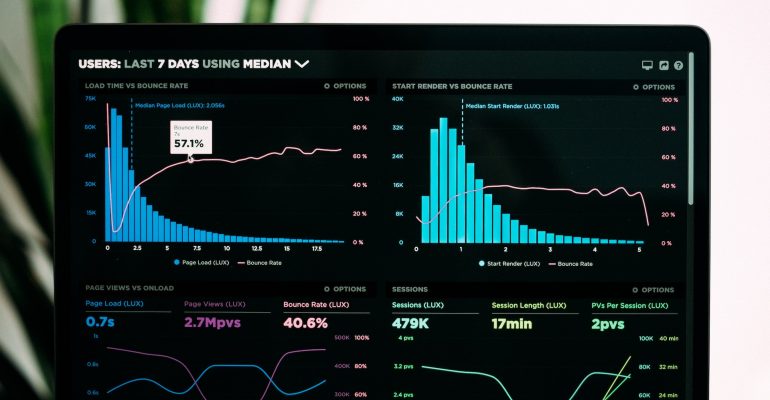Data Analytics: Unveiling Insights for Better Decision-Making
September 27, 2023 2023-09-27 10:44Data Analytics: Unveiling Insights for Better Decision-Making
In today’s data-driven world, businesses have access to an unprecedented amount of data. However, the real value lies in the insights hidden within this data. Data analytics is the process of extracting meaningful patterns and insights from data to drive informed decision-making. In this comprehensive guide, we’ll explore the realm of data analytics, its significance, and how it empowers organizations to make smarter choices.
Understanding Data Analytics
Data analytics involves the use of various techniques and tools to analyze raw data, draw conclusions, and make informed decisions. The process typically includes data preparation, cleansing, analysis, and interpretation. Here are the primary steps involved:
1. Data Collection:
Gathering data from various sources is the first step. This can be structured data (like databases) or unstructured data (like social media posts).
2. Data Cleaning and Preparation:
Raw data is often messy or incomplete. Data cleaning involves identifying and correcting errors, inconsistencies, and inaccuracies. Data preparation involves formatting and organizing the data for analysis.
3. Data Analysis:
Analyzing the prepared data using statistical and mathematical techniques to discover patterns, trends, and correlations.
4. Data Visualization:
Representing the analyzed data in a visual format (graphs, charts, etc.) to make it easier to comprehend and interpret.
5. Interpretation and Decision-Making:
Interpreting the analyzed data and using the insights gained to make informed decisions.
Why Data Analytics is Crucial
1. Informed Decision-Making:
Data analytics provides valuable insights that enable businesses to make informed, evidence-based decisions rather than relying on intuition.
2. Competitive Advantage:
Organizations that effectively use data analytics gain a competitive edge by understanding customer behavior, market trends, and optimizing operations.
3. Customer Understanding:
Analyzing customer data helps in understanding preferences, buying patterns, and improving customer experiences.
4. Operational Efficiency:
Data analytics helps in optimizing processes, identifying bottlenecks, and streamlining operations, leading to increased efficiency and cost savings.
5. Innovation and Product Development:
Data analytics can uncover insights that drive product development, enhancements, and innovation to meet changing market needs.
Types of Data Analytics
1. Descriptive Analytics:
Descriptive analytics focuses on summarizing historical data to understand what has happened in the past. It provides context and helps in pattern recognition.
2. Diagnostic Analytics:
Diagnostic analytics delves into past data to determine why a certain event occurred. It aims to identify the factors that led to a specific outcome.
3. Predictive Analytics:
Predictive analytics uses historical data and statistical algorithms to predict future outcomes or trends. It’s valuable for forecasting and planning.
4. Prescriptive Analytics:
Prescriptive analytics goes beyond predicting outcomes and recommends actions to influence desired outcomes based on the predicted scenarios.
Applications of Data Analytics
1. Business Intelligence (BI):
BI tools use data analytics to analyze business information and provide actionable insights, aiding strategic decision-making.
2. Marketing and Customer Analytics:
Analyzing customer data helps in targeted marketing, understanding customer preferences, and improving overall customer experience.
3. Financial Analytics:
In the finance sector, data analytics is used to predict market trends, manage risks, detect fraud, and optimize investment strategies.
4. Healthcare Analytics:
Data analytics in healthcare involves analyzing patient data to improve treatment outcomes, optimize hospital operations, and enhance healthcare delivery.
5. Supply Chain and Logistics Analytics:
Analytics in supply chain management helps in optimizing inventory levels, logistics operations, and demand forecasting.
Challenges and Considerations
1. Data Quality and Accuracy:
Inaccurate or poor-quality data can lead to incorrect conclusions. Ensuring data quality is a significant challenge.
2. Privacy and Security:
With the rise in data breaches, ensuring the privacy and security of sensitive data during analysis is critical.
3. Talent and Skills Gap:
The demand for skilled data analysts and data scientists often exceeds the available talent pool, creating a skills gap.
4. Data Integration:
Integrating data from various sources can be complex, making data preparation and analysis challenging.
Future Trends in Data Analytics
1. Artificial Intelligence (AI) and Machine Learning (ML):
AI and ML will play a significant role in automating data analytics, providing deeper insights, and enabling faster decision-making.
2. Edge Analytics:
With the proliferation of IoT devices, edge analytics will become vital in processing data closer to the source, reducing latency and bandwidth usage.
3. Explainable AI:
As AI becomes more complex, there will be a growing need for making AI models more interpretable and explainable to gain trust and acceptance.
4. Augmented Analytics:
Augmented analytics uses AI to enhance data preparation, insight generation, and sharing insights, making data analytics more accessible to a broader audience.
Conclusion
Data analytics is a powerful tool that unlocks valuable insights from the vast amount of data generated daily. It equips organizations with the ability to make informed, data-driven decisions, giving them a competitive edge in today’s fast-paced business landscape. As the field of data analytics continues to evolve, staying updated with the latest trends and technologies is essential for businesses aiming to harness the full potential of their data. By embracing data analytics and leveraging its capabilities, organizations can navigate challenges, innovate their offerings, and pave the way for a more efficient and prosperous future.






